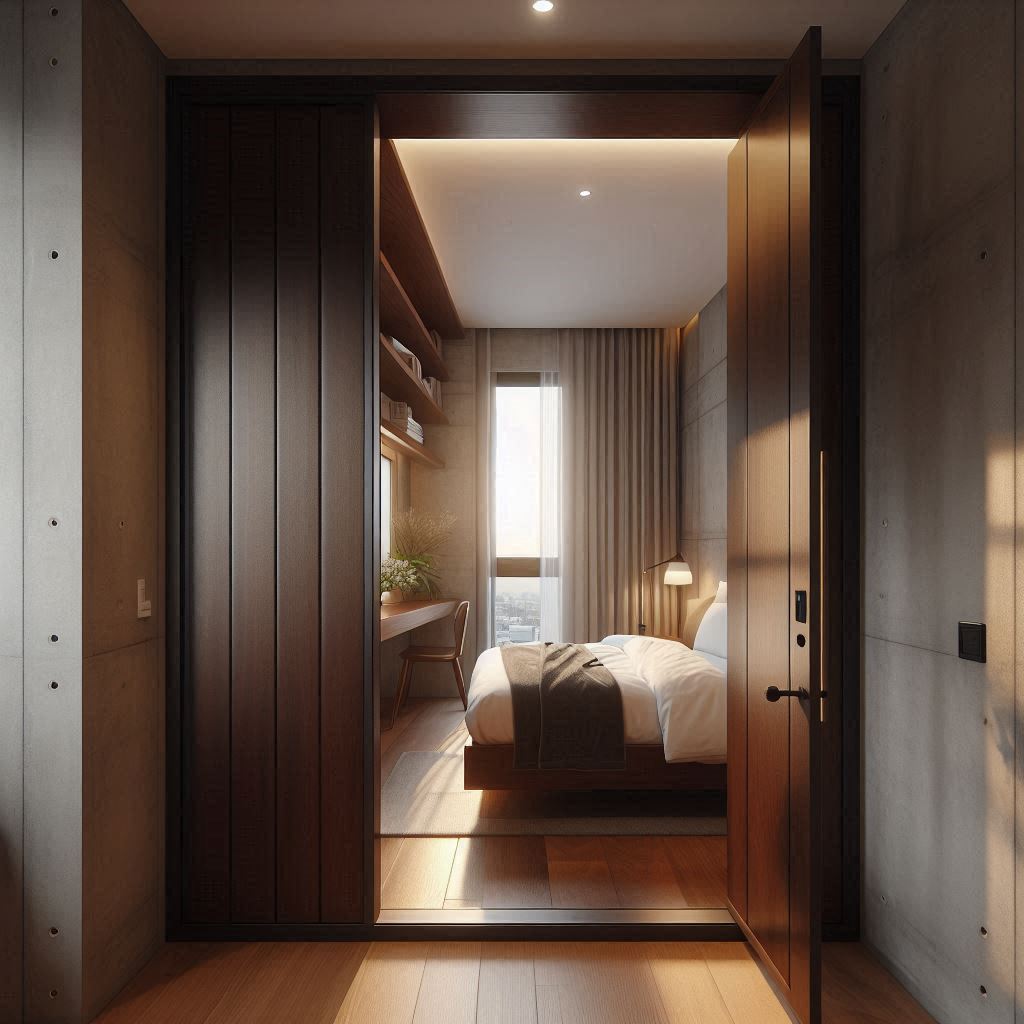Pocket doors are increasingly popular due to their space-saving functionality and modern aesthetics. However, the cost to install a pocket door can vary significantly depending on several factors, including the type of installation, material selection, and project complexity. Understanding these factors can help you make an informed decision and plan your budget effectively. In this detailed guide, we will break down the various elements that influence pocket door installation costs, providing you with a thorough understanding of what to expect.
Understanding the Cost Range for Pocket Door Installation
The Cost to Install a Pocket Door generally falls between $550 and $12,000. This wide range is due to the diversity in project scopes—ranging from simple installations in new constructions to complex retrofits in existing structures. The specifics of your project, such as door size, material, and installation complexity, will determine where your costs fall within this spectrum.
Key Factors Influencing Pocket Door Installation Costs
Several key factors contribute to the overall cost of pocket door installation. These include:
- Installation Type: Whether you are installing a pocket door in a new construction or retrofitting one into an existing wall will significantly impact the cost. Retrofitting typically involves more labor and structural modifications, driving up the price.
- Material Choice: The material you choose for your pocket door will affect both the aesthetic and the cost. Options range from hollow core to solid wood, fiberglass, and glass, each with its own price point.
- Complexity of Installation: The more complex the installation—such as dealing with load-bearing walls, or customizing the door size—the higher the cost.
- Customization: Custom-sized or uniquely designed doors require specialized manufacturing, which can add significantly to the cost.
Detailed Breakdown of Pocket Door Installation Costs by Size
The size of the door plays a crucial role in determining the installation cost. Below is a breakdown of average costs based on door size, distinguishing between new installations and retrofits into existing walls.
| Door Size (inches) | Average Installed Cost (New Construction) | Average Installed Cost (Existing Wall Retrofit) |
|---|---|---|
| 32 | $550 – $1,700 | $1,600 – $2,600 |
| 34 | $550 – $1,800 | $1,700 – $2,700 |
| 36 | $650 – $1,950 | $1,800 – $2,950 |
| 46 | $650 – $2,200 | $1,600 – $3,100 |
| 48 | $720 – $2,950 | $1,700 – $3,900 |
Impact of Size on Material and Labor Costs
- Material Costs: Larger doors require more material, which naturally increases the cost. For instance, a 48-inch door will require more wood, glass, or fiberglass than a smaller 32-inch door.
- Labor Costs: Installing larger doors also requires more labor, especially if structural modifications are needed to accommodate the size. This is particularly true for retrofits in existing walls, where the process is more labor-intensive.
Pocket Door Installation Costs by Material
The material you choose for your pocket door significantly impacts both the initial purchase price and the overall installed cost. Here’s a detailed look at how different materials stack up:
| Material | Average Installed Cost (New Construction) | Average Installed Cost (Existing Wall Retrofit) |
|---|---|---|
| Hollow Core | $600 – $900 | $1,000 – $1,800 |
| Chalkboard | $550 – $2,300 | $1,100 – $3,000 |
| Glass | $600 – $2,350 | $1,200 – $3,200 |
| Solid Wood | $650 – $2,400 | $1,300 – $3,300 |
| Fiberglass | $700 – $1,100 | $1,200 – $2,000 |
Detailed Material Cost Analysis
- Hollow Core Pocket Doors: These are the most budget-friendly option, typically ranging from $600 to $900 for new installations. However, they are less durable due to their thin MDF shell construction. When retrofitting into an existing wall, expect the cost to increase significantly due to additional labor.
- Chalkboard Pocket Doors: Priced between $550 and $2,300, these doors offer the unique functionality of a writable surface, ideal for kitchens or children’s rooms. However, the customization and additional surface preparation add to the cost.
- Glass Pocket Doors: Known for their aesthetic appeal, glass pocket doors can range from $600 to $2,350. The installation process for these doors is more delicate due to the fragility of the material, which can drive up labor costs.
- Solid Wood Pocket Doors: A solid wood door offers durability and a classic look but comes at a higher price point, ranging from $650 to $2,400. These doors are heavier, requiring more robust hardware and possibly structural modifications, particularly in existing buildings.
- Fiberglass Pocket Doors: Costing between $700 and $1,100, fiberglass is a lightweight, durable option that doesn’t require much maintenance. This material is less likely to need refinishing, making it a cost-effective choice in the long run.
Pocket Door Installation Costs by Door Type
The type of pocket door you choose—whether single, double, or French—also plays a significant role in determining the overall cost. Below is a breakdown of costs associated with different door types.
| Door Type | Average Cost (Materials Only) | Average Installed Cost (New Construction) | Average Installed Cost (Existing Wall Retrofit) |
|---|---|---|---|
| Single | $500 – $2,100 | $500 – $2,700 | $1,200 – $3,000 |
| Double | $900 – $4,200 | $1,100 – $5,100 | $1,600 – $6,500 |
| French | $1,100 – $4,300 | $1,300 – $5,500 | $2,000 – $7,000 |
In-Depth Look at Different Door Types
- Single Pocket Doors: These are the most straightforward and cost-effective option, with an average installation cost ranging from $500 to $2,700. They are commonly used in smaller spaces like bathrooms or closets.
- Double Pocket Doors: These are ideal for larger openings or as room dividers. The cost for materials alone ranges from $900 to $4,200, with installation costs potentially reaching $5,100 for new constructions and even higher for retrofits.
- French Pocket Doors: Combining elegance with functionality, French pocket doors are a premium option, with costs ranging from $1,300 to $5,500 for installation. Their complex installation, especially when dealing with glass panes, justifies the higher price.
Factors That Increase Pocket Door Installation Costs
Several factors can drive up the Cost to Install a Pocket Door. Understanding these can help you plan your project more effectively.
- Door Type and Design: The specific type and design of the pocket door significantly affect the cost. Premium designs or those with custom features will naturally be more expensive than standard models.
- Door Size: Larger or custom-sized doors require more material and labor, increasing the overall cost.
- Wall Structure: Modifications to the existing wall structure—such as resizing, reinforcing, or making space for the pocket door—add to the complexity and cost of the installation.
- Labor Costs: Skilled labor is essential for a quality installation, particularly for complex projects. The more specialized the labor required, the higher the cost.
- Finishing and Hardware: The type of finish and hardware you choose will also impact the total cost. High-end finishes or additional features like soft-close mechanisms can add a significant amount to the budget.
How to Reduce Pocket Door Installation Costs
While pocket door installations can be expensive, there are ways to manage costs without compromising on quality or aesthetics. Here are a few strategies:
- Opt for Standard Sizes: Custom sizes can dramatically increase costs due to the need for specialized manufacturing. Choosing a standard size can help keep your budget in check.
- Select Cost-Effective Materials: If you’re looking to reduce costs, consider opting for hollow core or fiberglass doors, which are generally more affordable than solid wood or glass.
- Simplify the Installation: If possible, avoid complex installations that require extensive modifications to your walls or structure. This will help reduce labor costs.
- DIY Finishing: If you have the skills, consider finishing the door yourself after installation. This can save on labor costs associated with painting or staining.
- Shop Around for Quotes: Don’t settle for the first estimate you receive. Get multiple quotes from different contractors to ensure you’re getting the best value for your money.
Is Installing a Pocket Door a Good Investment?
Pocket doors are not only functional but also add a sleek, modern aesthetic to your home. They can be a great investment, particularly in homes where space is at a premium. By sliding into the wall, pocket doors free up valuable floor space that would otherwise be occupied by a swinging door. This makes them ideal for small rooms, tight spaces, or areas where maximizing square footage is essential.
However, the decision to install a pocket door should be weighed against the potential costs. In some cases, the price of retrofitting a pocket door into an existing wall can be high due to the need for structural modifications. On the other hand, in new constructions or during major renovations, the cost can be more manageable.
Final Thoughts on Pocket Door Installation Costs
Before you decide to install a pocket door, it’s important to thoroughly analyze the costs involved. Consider the type of door, the materials, and the complexity of the installation. While the upfront cost to Install a Pocket Door can be significant, the long-term benefits—such as enhanced aesthetics, improved space utilization, and increased home value—can make it a worthwhile investment.
If you find the process of estimating costs overwhelming or confusing, it may be beneficial to consult with a cost-estimating firm. These professionals can help you navigate the complexities of the project, ensuring that it is completed on time and within your budget.
By understanding the various factors that influence the cost of pocket door installation, you can make informed decisions that align with both your budget and your aesthetic goals. Whether you’re looking to install a single door in a small space or a double door to divide a larger room, careful planning and budgeting will help you achieve the best results.

